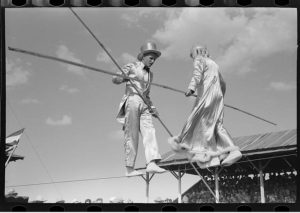In today’s New York Times, David Brooks astutely points out that the challenge for GM is cultural, and not simply structural or financial. He notes:
On Jan. 21, 1988, a General Motors executive named Elmer Johnson wrote a brave and prophetic memo. Its main point was contained in this sentence: “We have vastly underestimated how deeply ingrained are the organizational and cultural rigidities that hamper our ability to execute.”
On Jan. 26, 2009, Rob Kleinbaum, a former G.M. employee and consultant, wrote his own memo. Kleinbaum’s argument was eerily similar: “It is apparent that unless G.M.’s culture is fundamentally changed, especially in North America, its true heart, G.M. will likely be back at the public trough again and again.”
In the final analysis, the challenge of leadership for our times is creating if not refocusing on our notion that we can accomplish things. Leaders have to take the responsibility for communal and organizational culture. Before anything else, they have to focus on the sense that we’ve regained our sense of cultural momentum, that we’ve overcome inertia and hesitation has been left behind.
Have you heard, “We have a can-do culture?” Or, “We have a culture that stays on top of things?” Sometimes momentum is a question of your ability to ingrain the culture of the group into the individual. In some organizations, you walk in and you immediately have the sense that they can run with the ball and go the distance. Such a culture is one of “drive.” Consider firefighters. Theirs is a culture full of tradition. They reinforce expected behavior through the stories of the heroic deeds of their brethren, by recounting pivotal events, important people and their actions. They tell and retell stories that subtly and not so subtly communicate how a firefighter is supposed to engage in that organization and that build a sense of belonging among its members. Firefighters take action and extraordinary risk because of their strong sense of mission. As a result, their focused drive saves lives. The most effective leaders of firefighters are able to sustain momentum by using the firefighter culture to inspire and deliver outstanding commitment and superior performance.
Imagine two groups with comparable resources. One group shows results, while the other can’t seem to get anything done. They start a lot of projects, but they finish nothing. They don’t have the capacity to go the distance. Sure, they may listen to the same CEO give the same call to action. But when it comes to implementing an agenda or demonstrating superior results, even though the teams have similar talent, a similar organization, “the B team” somehow falls short. Their agenda goes unfulfilled. You’ve seen plenty of examples of this. The new product launch, which was so highly touted, turns into a money pit. The reorganization that was supposed to improve customer satisfaction results in customer confusion. The rollout of a performance management system gets stuck in meeting paralysis. The best-laid plans become some of the worst-laid eggs.
In many of these cases, the X factor is cultural momentum. Using value and purpose, the leader of the “A team” created a sense of belonging, commitment, and collaboration among the group’s members. People relate to others in the group. They relate to the group as a whole. In a real sense, they define themselves in relation to the group and/or the initiative. This is the foundation of cultural momentum that will get this team through adversity.
The leader of the “B team” is unable to build that sense of belonging and relatedness. On this “team,” people largely feel like individuals who happen to be clustered together, but they don’t have any deep feeling of belonging. When the agenda hits a bump in the road, members begin to question things. They point fingers. They criticize. They don’t rally together. This team will lose momentum quickly. And the source of the leak is the absence of a cohesive culture.
Steve Jobs is one of the great motivators and sustainers of cultural momentum. When he founded Apple, he built a culture of innovative thinking and a sense of belonging in the coalition battling “the dark side” of the PC industry. Apple’s early success was certainly due to its innovative design and its elegant and easy operating system. Its success was also due to Jobs’s ability to sustain cultural momentum—to maintain that sense of belonging to the “Apple cause” and to keep on battling even though Microsoft and IBM were becoming the industry standard.
Fast-forward to 1997. Jobs returned to Apple and re-infused the cultural momentum that the company lost under John Sculley, Mike Spindler, and Gilbert Amelio. One of his first moves was to launch the iMac line of computers. It was, arguably, Jobs’s ability to sustain Apple’s cultural momentum that got Jobs and the organization through hard times from 2000 to 2003 and to remain focused on its innovative capacities with the introduction of the iPod music player in 2001. By 2004, the iPod had reinvented Apple and had helped drive Apple’s stock price up five-fold. And through both his tenures, Jobs demonstrated the capacity to sustain Apple’s cultural momentum—to create and nurture “believers” in Apple’s products, its innovative capacity, and its commitment to “think different.”
When trying to sustain cultural momentum, you need to motivate your team. You have to constantly make people believe and accept the purpose and direction of your efforts. The managerially competent leader understands that a group’s culture should be strong enough to sustain commitment and identity, but not so strong that it creates an all-encompassing cult of enmeshed zombies. In sustaining cultural momentum you want to create an integrative, collective culture, but you do not want to destroy the capacity of people to reflect, deviate, and come up with creative alternatives.



